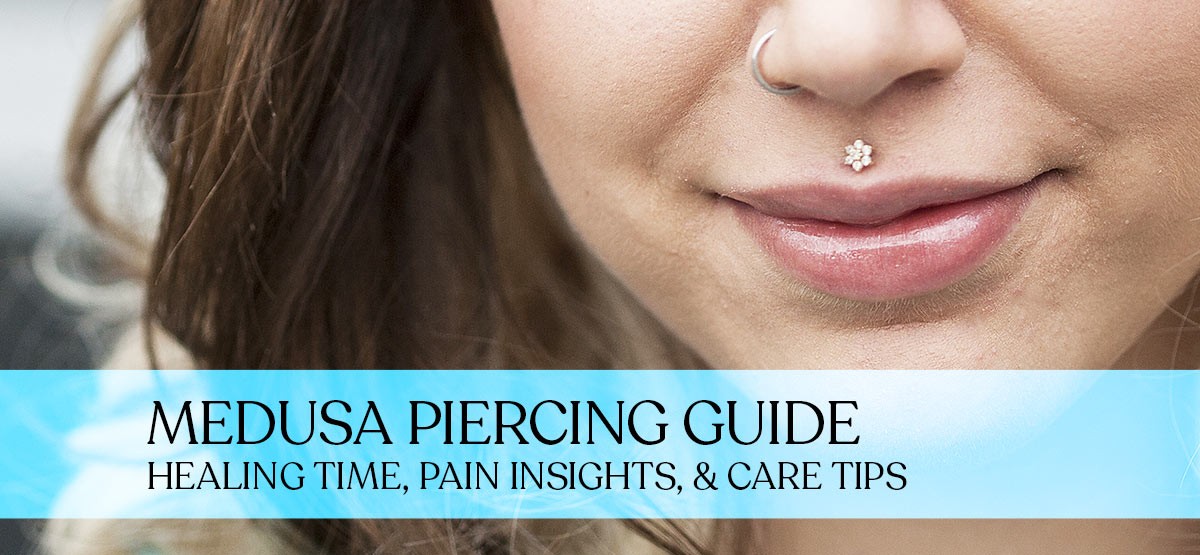
Medusa Piercing Guide: Healing Time, Pain Insights, & Care Tips
Considering a medusa piercing? Get the facts on pain levels, healing timelines, and essential aftercare straight away. Our guide takes you through the key stages of getting and caring for a medusa piercing, helping you decide if this style is right for you.
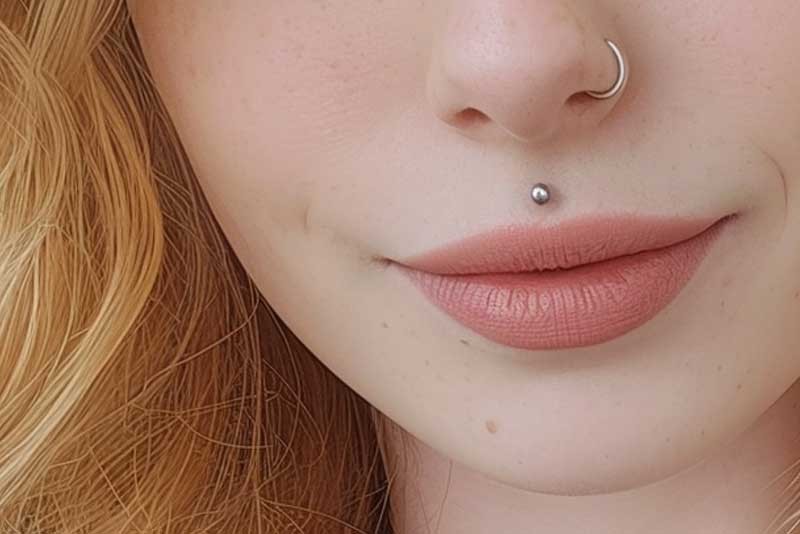
Medusa Piercings
The Medusa piercing, also known as the philtrum piercing, is strategically placed in the groove under the nose and above the center of the upper lip. This area is often referred to as the Cupid’s bow. Philtrum piercings, with their unique placement, draw focus to the lower half of your face, particularly enhancing the shape and prominence of your lips.
Despite the piercing’s association with pain, the truth is a Medusa piercing doesn’t hurt as much as you might think. Like with other body piercings, the piercing process involves making a small hole through the lip, after which a piece of jewelry is inserted. But don’t worry, professional piercers are trained to make the process as painless as possible.
Selecting the Perfect Labret Stud
Choosing the right jewelry for your Medusa piercing is an important step in the process. The initial jewelry should be made of high-quality materials, such as implant-grade titanium, surgical stainless steel, or solid 14-karat gold. Why? Because these materials minimize the risk of allergic reactions and promote better healing.
While a longer labret stud is initially recommended to accommodate swelling, it’s important to downsize to a shorter bar after the swelling subsides. This process should ideally be handled by an experienced professional piercer to minimize the risk of infection and ensure proper technique, especially for the first downsizing.
What to Expect When You're Expecting...a Piercing
So, you’re probably wondering, does a Medusa piercing hurt? The pain level of a Medusa piercing is subjective and generally considered moderate on a pain scale, rated at about a 5 out of 10. The immediate sensation is a quick, sharp pain, lasting only for a few seconds during the piercing process. Individual pain thresholds and the higher concentration of nerve endings around the philtrum can lead to variations in pain levels experienced.
Post-Piercing: Navigating the Healing Process
After getting your Medusa piercing, it’s time for the healing process to begin. The average healing time frame for a Medusa piercing ranges from 8 to 12 weeks, but individual healing times can vary slightly.
During this time, it’s essential to follow the aftercare instructions provided by your experienced piercer. This includes keeping the initial jewelry in for the recommended period, to ensure the health and proper healing of the Medusa piercing. This may seem like a long time, but remember, good things come to those who wait!

The Journey of Getting Your Medusa Piercing
The journey of getting your Medusa piercing starts with a consultation where piercing professionals cover important topics such as healing and care, appropriate jewelry, and potential risks. The professional evaluates you, discusses any metal allergies, and selects an appropriate implant-grade titanium labret stud of the correct gauge.
Before the actual lip piercing process begins, the piercing professional prepares by wearing gloves and setting out sterilized tools and jewelry in a clean area. Precise markings are made for the placement of the oral piercing to ensure it is well-centered and aligns inside the mouth. A hollow needle is then used to create the piercing hole, penetrating the lip tissue, which is clamped with forceps. With the growing popularity of lip piercings, it is important to follow these steps for a safe and successful procedure.
After the needle is inserted, a taper pin or guide pin is used to push the needle out, allowing for the jewelry to be placed or threaded into the new piercing.
Oral Hygiene with a New Piercing
Maintaining good oral hygiene is crucial to the healing of a new Medusa piercing. After receiving the piercing, you should gently brush your teeth for optimal healing. An alcohol-free mouthwash or saline solution should be used after consuming food, or when additional cleaning is necessary, to maintain cleanliness without irritating the piercing.
Additionally, replace your current toothbrush with a new one upon getting a Medusa piercing to minimize the risk of introducing bacteria to the area. Drinking plenty of water can aid in the removal of food particles and stimulate saliva production, which is beneficial for the healing of a new piercing.
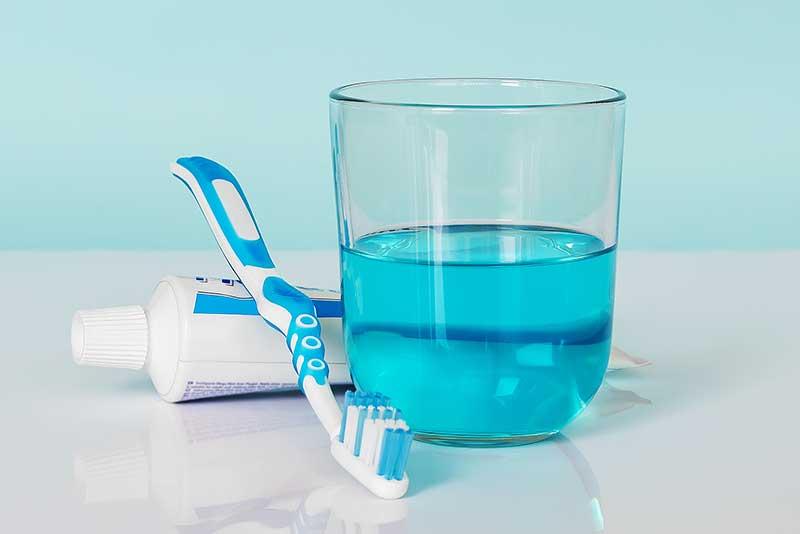
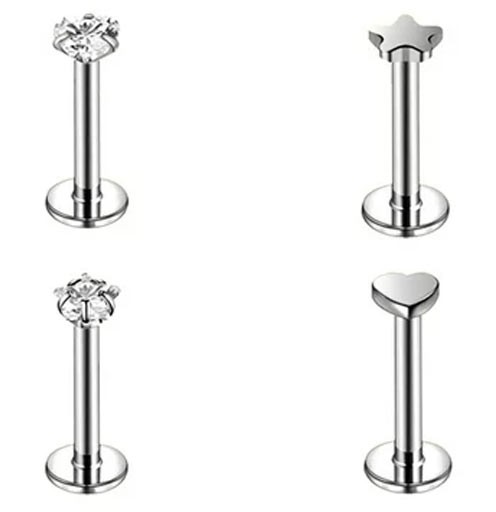
Changing Your Jewelry: Timing and Technique
It’s recommended to wait around six months before downsizing the Medusa jewelry to ensure internal tissue has healed completely, especially if the initial longer jewelry feels too loose.
Professional piercers should handle jewelry changes, at least for the first downsizing, to minimize infection risk and ensure it is done correctly. When you’re ready to change the jewelry yourself, follow these steps:
-
Remove the current jewelry by unscrewing the back and pulling the stud out from the front.
-
Insert the new jewelry gently to avoid trauma.
-
Use internally threaded jewelry to prevent snags or tears.
It’s also important to select appropriate jewelry for the Medusa piercing; it should be long enough to avoid embedding into the skin but not so long that it causes damage to gums and teeth.
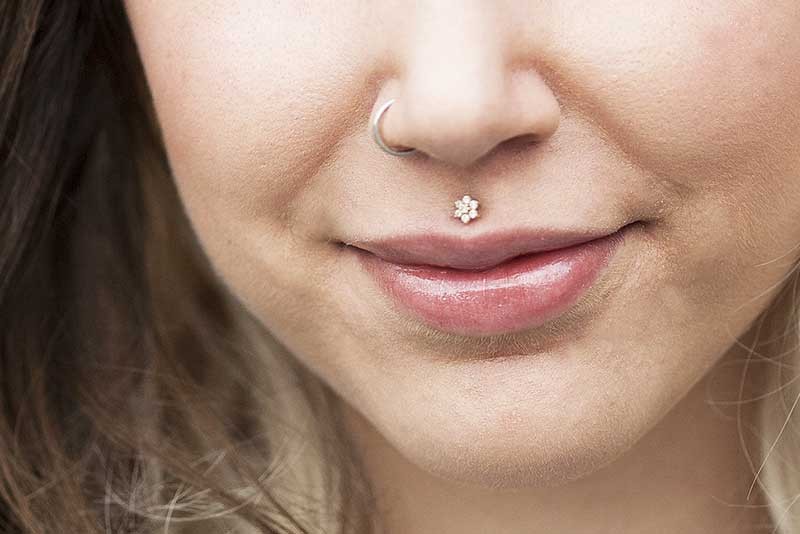
Getting a Medusa piercing is a journey that requires careful thought, professional guidance, and diligent aftercare.
Whether you’re considering getting a Medusa piercing or already have one, remember that knowledge is power. With the right information and proper care, you can ensure that your piercing heals properly and continues to be a striking addition to your personal style.
Comprehensive Aftercare for Your Medusa Piercing
Aftercare is crucial to the healing process of your Medusa piercing.
Here are some care suggestions:
-
Clean the piercing daily with a sterile saline solution.
-
Use an antimicrobial soap around the skin during showers.
-
Soak the piercing area with a sea salt solution.
Following these tips will help ensure proper healing of your Medusa piercing, so your piercing heals as expected.
Recommended cleaning supplies include pre-made aftercare products like H2Ocean spray or NeilMed Piercing Aftercare. It’s advised to avoid products with additives such as tea tree oil. For effective cleaning, tissues should be used for drying instead of cloth towels, and solutions like hydrogen peroxide, Bactine, and Neosporin should be avoided.
Remember to thoroughly wash your hands before touching the piercing, and be sure the saline solution is at a safe temperature for use.

